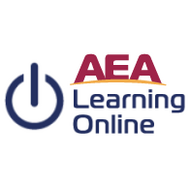
(View Complete Item Description)
Adapted from the Google for Edu Training Center MaterialsFor years, teachers have assigned homework by writing it on the whiteboard. Students (who are paying attention) write down, “Read pages 81-86 of the Biology textbook. Answer unit review questions 1-5,” to remember it later. Hopefully, the students copy these instructions correctly and don’t lose them amongst their other papers and notes. The following day, they take their work and place it on the teacher’s desk or perhaps in a small basket labeled, “Homework.” Of course, it’s easy for even the most careful student to make a mistake somewhere in this process and never turn anything in at all!Fortunately, in today’s world we can use Google tools to implement better processes and ensure your students’ work does not get lost along the way.Google Classroom is an excellent way to accomplish this. You can assign classwork or homework, let students know when their assignments are due, and add all the documents, links and videos with a few clicks. You can also instantly create individual copies of a doc for each of your students which are then shared and organized for you all in Classroom! As you manage assignments in Classroom, your students will receive email notifications for new assignments and see information on upcoming due dates.Your classroom is composed of unique learners who may need different resources at different times. Delivering specific resources to specific students is simple with Google Classroom. Build an assignment and use the drop down menu at the top to select individual, or sets of, students to receive the assignment. This feature is great for when some students are ready to move ahead with coursework. Simply assign them the work. When other students are ready to catch up, use the same process to assign the necessary work to them. Assign the right content and assignments at the right time and help personalize your student’s education experience by using Google Classroom.You can also create assignments for your students within Google Drive. You can have folders for all your students to see, and individual folders for each student so they can keep track of all their work in one place.Gone are the wasted hours in front of the photocopier. You can save time, paper, and chalk and personalize your classroom using Google Classroom.”
Material Type:
Lesson Plan
Author:
Jen Van Fleet


















